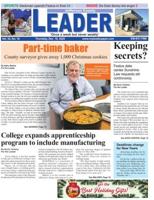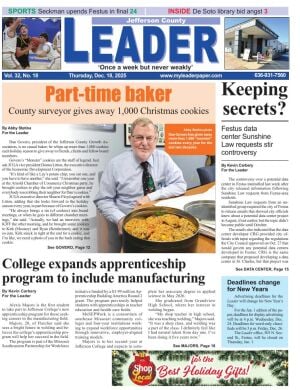Windsor C-1 officials have adopted a budget for this school year that projects the district spending $7,164,632 more than it brings in, primarily due to planned capital improvement project expenditures.
According to the new budget, the district will bring in $41,120,267 in revenue and spend $48,284,899 this fiscal year, which began July 1 and runs through June 30, 2026.
“While the overall budget reflects a significant deficit on paper, it’s important to note that $6,778,686 of that total represents funds from our 2022 bond issue and other capital project allocations,” Superintendent Jason King said. “By law, these funds must be used exclusively for the specific purposes for which they were approved by voters, and we are intentionally spending them down to complete those projects as planned.”
When looking at only the district’s general operating funds, which cover employee pay and other day-to-day expenses, the district is expected to bring in $35,041,019 in operating funds and spend $36,871,686 in operating costs, for a $1,830,667 deficit.
“The district’s deficit spending (in the operating funds) is primarily the result of strategic investments in employee compensation and rising fixed costs,” King said. “This includes awarding one salary step to all eligible employees, adding $1,500 to the certified salary schedule base, and applying a 3.53 percent increase to the noncertified salary schedule. In addition to the compensation increases, there has been a substantial rise in health insurance premiums, along with projected increases in both property and workers’ compensation insurance costs.
“These factors combined contribute to the overall increase in expenditures and the resulting deficit. While deficit spending is not ideal, these decisions reflect the district’s commitment to remaining competitive in the job market and to honoring the work of our staff in a fiscally responsible manner.”
Reserves
The district started the current budget year with about $6.4 million in unrestricted general operating funds, or reserves, which is about 17.36 percent of it annual operating expenses, and is expected to end the fiscal year with about $3.96 million in reserves, a reduction of about $2.44 million. That would leave the district with about 10.7 percent of the annual operating budget in reserves, King reported.
“As a district, we strive to budget conservatively each year and maintain a reserve balance near 20 percent (of annual operating expenses) as a safeguard against unforeseen circumstances,” he said. “While we project to be below that target at the close of FY26, we remain confident in the district’s overall financial position. We feel good about where we are in terms of our budget, the significant projects we are completing to enhance our facilities and learning environments, and our continued ability to offer competitive salary and benefits packages to attract and retain high-quality staff.”
In addition to the approximately $2.44 million from reserves, King said, the district’s deficit spending will be covered with capital project funds carried over from previous years, primarily funds tied to revenue from the $20 million bond issue Windsor district voters approved in 2022.
The district’s overall tax rate is 4.7841 percent per $100 assessed valuation.
Expenditures
King said the $6,778,686 allocated in the budget for bond issue and capital project funds include funding for general maintenance, as well as $1.5 million to complete the addition and renovation work at the high school and intermediate center; $650,000 to finish the playground installation at the Windsor and Freer elementary schools; $200,000 for elevator modernization at the high school; $220,000 to enhance security and technology infrastructure; and $150,000 for HVAC upgrades.
“These projects are a continuation of the district’s efforts to invest in facilities that support both student success and staff well-being,” King said.
The new budget also includes a 4.4 percent increase in employee compensation packages, including salaries and benefits, for all of its 405 employees. That increase to compensation packages will cost the district $1,319,353 this fiscal year, district officials reported.




